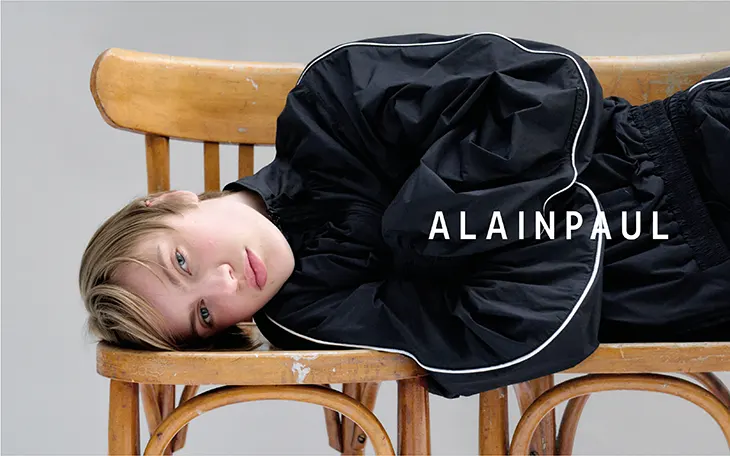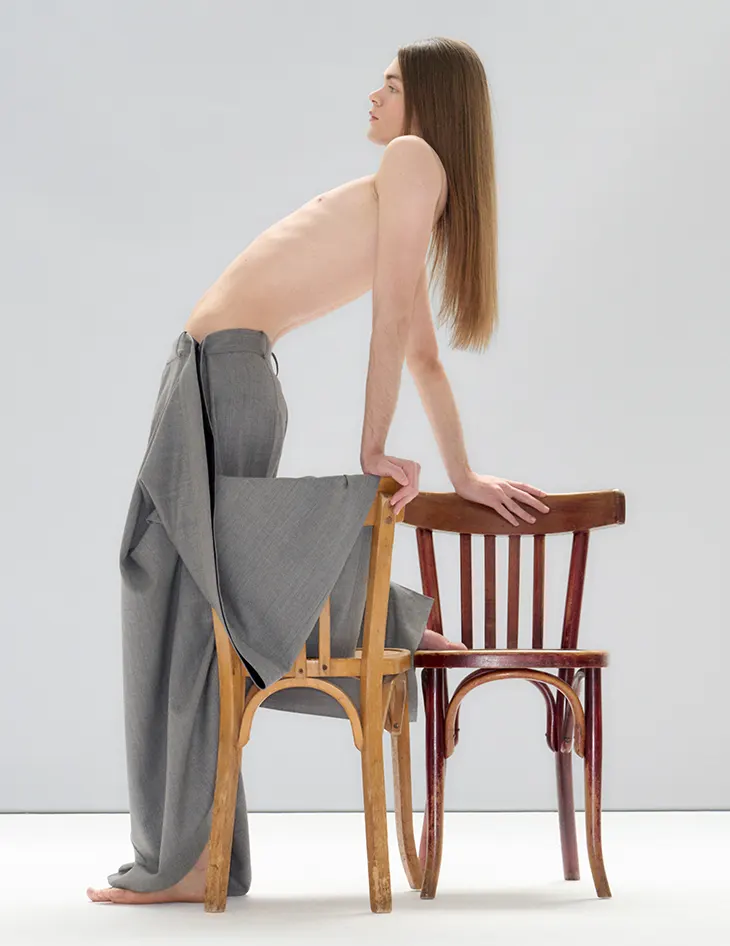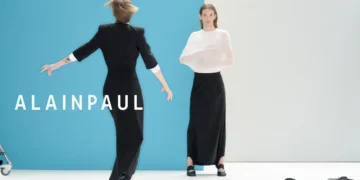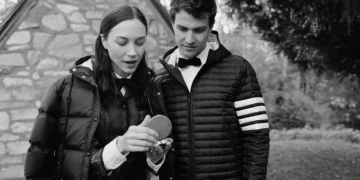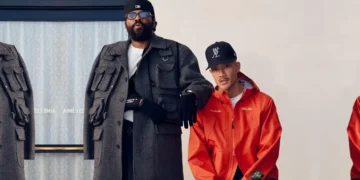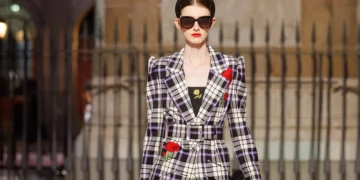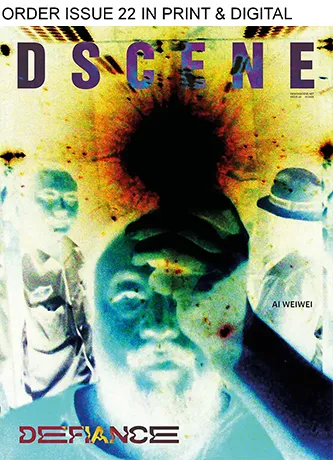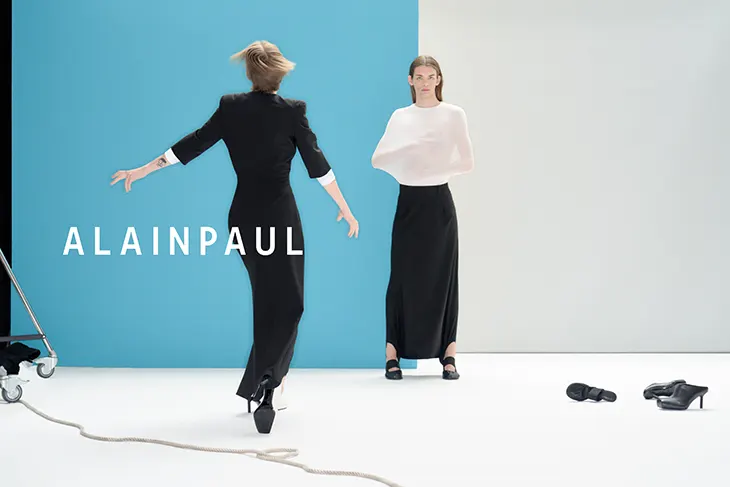
ALAINPAUL SS25 campaign centers on a concept as fluid as its silhouettes: improvisation. Titled IMPRO, the campaign translates the unpredictable language of movement into garment construction. Photographed by Marili Andre in collaboration with the John Cage Trust, the visuals echo the collection’s foundation in performance and unstructured form.
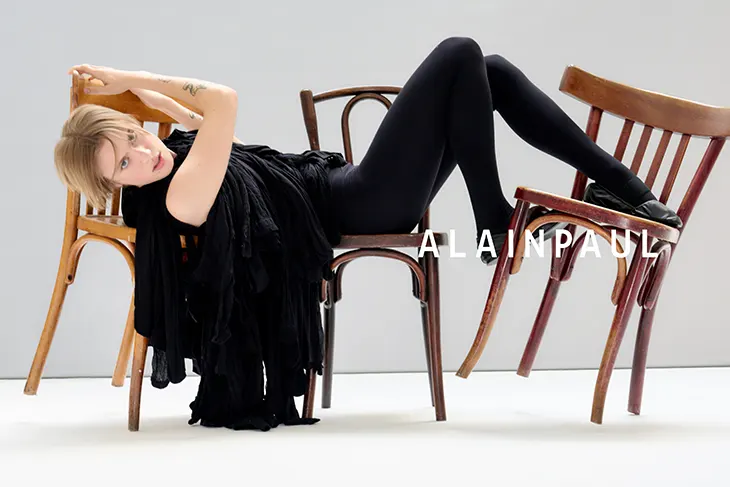
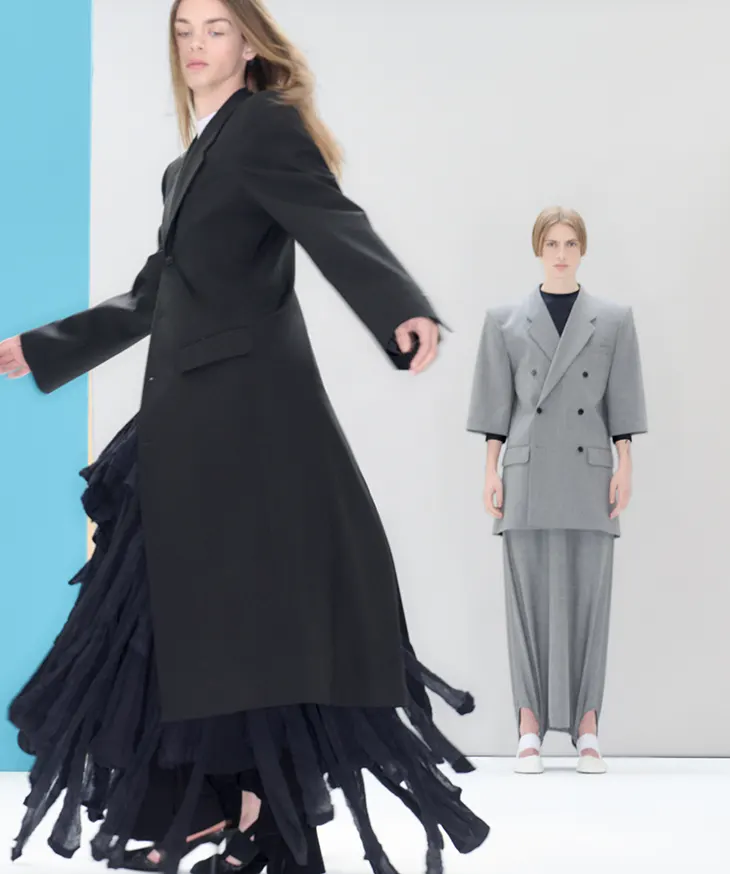
The collection transforms fuseaux, foot-strapped ballet tights, into a modular wardrobe. These once-functional garments evolve into long shirts, outerwear, and skirts that mirror a dancer’s elongated posture. Each silhouette responds to motion, extending or shifting across the body. Garments appear pulled or stretched to one side, forming asymmetries that feel spontaneous, much like improvised choreography.
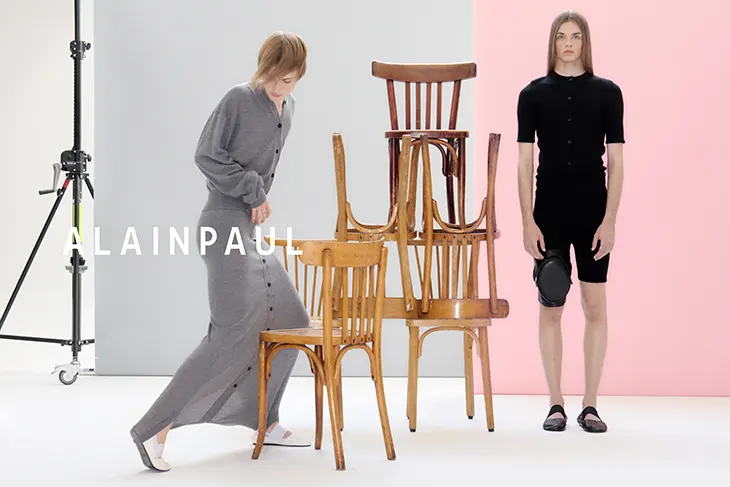
ALAINPAUL’s design vocabulary plays with duality. The collection’s signature tailoring returns with arched shoulders and directional straps, providing sculptural definition without rigidity. Tulle tops and translucent crin structures introduce a controlled tension, softly framing the body while suggesting constraint. These lighter layers float against the skin, contrasting the grounded structure of suiting and outerwear.

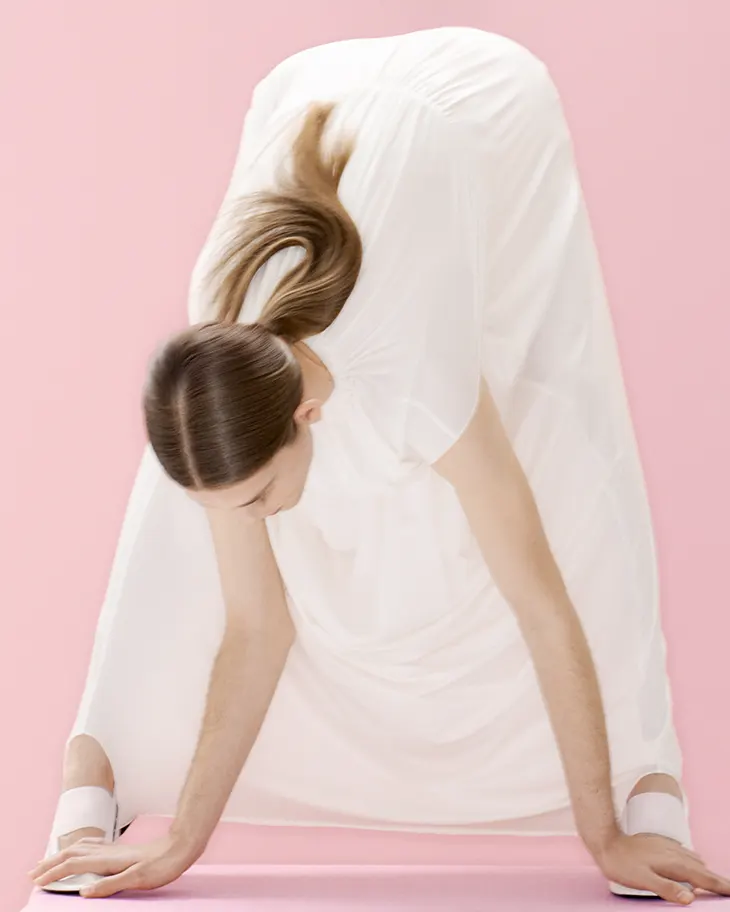
The use of black and white connects directly to Merce Cunningham’s 1991 ballet Beach Birds, a work known for its unpredictable yet disciplined choreography. This influence threads through the surface details: abstract embroidery patterns appear like fleeting notations across tights, dresses, and skirts. These sketches hint at choreography mid-development, marks of movement caught between thought and action. The visual language never settles into repetition. Instead, each print and stitched line seems to reference a passing gesture, as though drawn from memory rather than design.
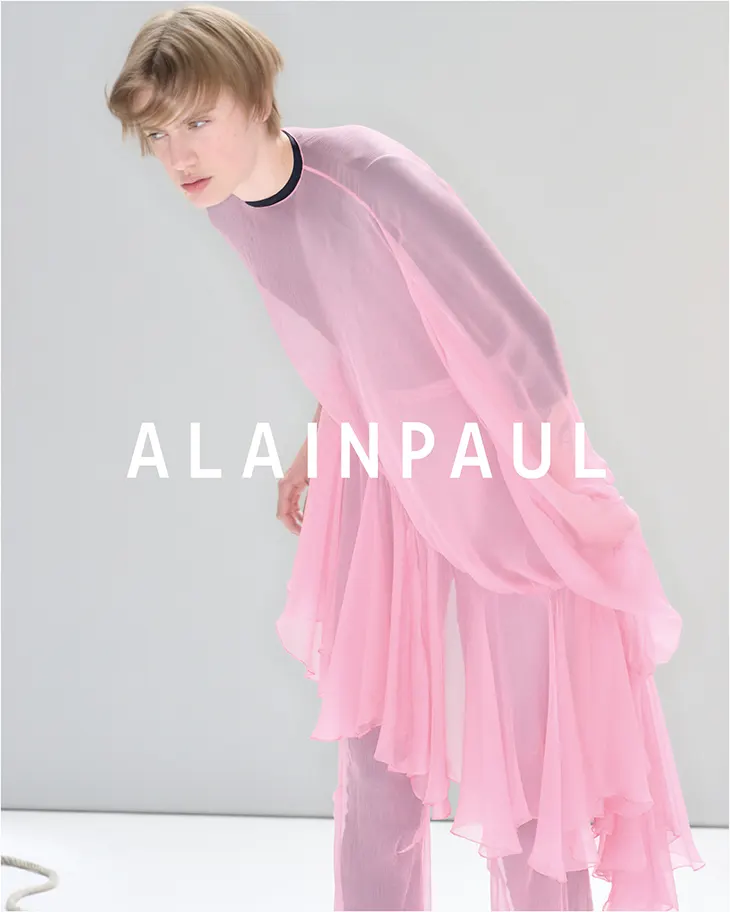
Models Elio Berenett and Tit Kukavica embody this improvisational tone. The campaign reflects the collaborative energy of a rehearsal room. Each piece acts like a sketch, unfinished until worn, defined not by symmetry but by responsiveness. The campaign, like the collection itself, stays open to variation. It invites the wearer not to fit into a shape, but to shape the garment through use.
